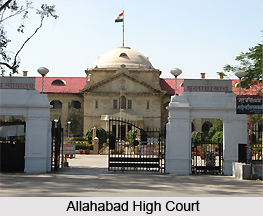 There is one municipal corporation (Ghaziabad), five municipal councils (Muradnagar, Modinagar, Hapur, Garhmuketeshwar and Pilkhua) and six Panchayats under the administration of the district. Ghaziabad was given the status of Municipal Corporation on 31st of August, 1994. There are 580 villages in the district out of which 535 villages are inhabited and 45 are non-inhabited. Divisional Commissioner, whose headquarter is at Meerut, holds charge of the division. He is the link between the districts and the government and supervises the administration as well as the planning and the development activities of these districts.
There is one municipal corporation (Ghaziabad), five municipal councils (Muradnagar, Modinagar, Hapur, Garhmuketeshwar and Pilkhua) and six Panchayats under the administration of the district. Ghaziabad was given the status of Municipal Corporation on 31st of August, 1994. There are 580 villages in the district out of which 535 villages are inhabited and 45 are non-inhabited. Divisional Commissioner, whose headquarter is at Meerut, holds charge of the division. He is the link between the districts and the government and supervises the administration as well as the planning and the development activities of these districts.
Ghaziabad District has been divided into four sub-divisions for the purpose of revenue and general administration namely Ghaziabad, Hapur, Modi Nagar and Garhmukteshwar. The centrally situated tehsil of Ghaziabad has three Parganas - Loni, Dasna and Jalalabad. Hapur tehsil lies in the east of the district and has three Parganas - Hapur, Babugarh and Dhaulana. Modi Nagar tehsil has only one pargana named Jalalabad and is located in the northern part. To the north-east lies tehsil Garhmukteshwar which comprises the two Parganas - Garh and Puth.
The general administration of Ghaziabad District is vested in the district officer who holds a key post and is the pivot of the district administrative machinery. He represents the State Government and is responsible for the proper execution of all the government orders. As a Collector his main function is to ensure the collection of land revenue and other government dues as well as the proper maintenance of land records. As District Magistrate his main duty is to maintain law and order with the help of the magistracy and the police. District Magistrate is assisted by five Additional District Magistrates, four Sub-Divisional Magistrates, two Additional City Magistrates and a City Magistrate in the proper functioning of the district administration. Each tehsil has a resident Tehsildar who is assisted by a number of Naib Tehsildars.
For the maintenance of law and order in this district of Uttar Pradesh there is a police organisation which is headed by a Senior Superintendent of Police. He is assisted by Superintendent of Police (city), Superintendent of Police (Rural) and seven Deputy Superintendents. For administrative convenience Ghaziabad District is divided into 22 police stations, each under the in charge of a Station Officer. Below the Station Officer there are sub-inspectors and head constables. The strength of the staff in a police station varies according to the area and the amount of work. Further, another important pillar of the administrative machinery of Ghaziabad District is the Judiciary of which the District and Sessions Judge is the head. Appeals against the decisions of the civil judge are heard by him and those against his orders by the High Court of Judicature at Allahabad.



















